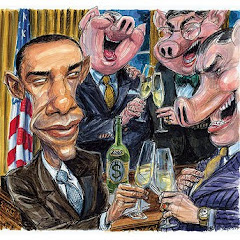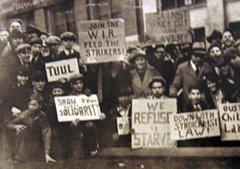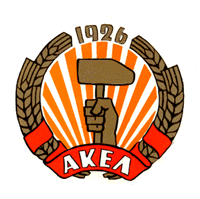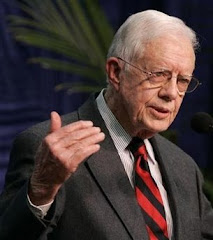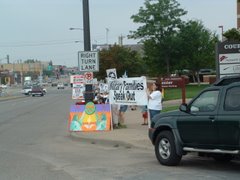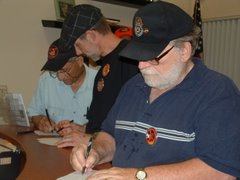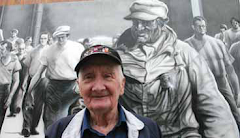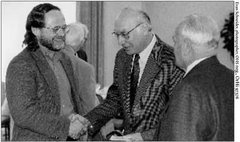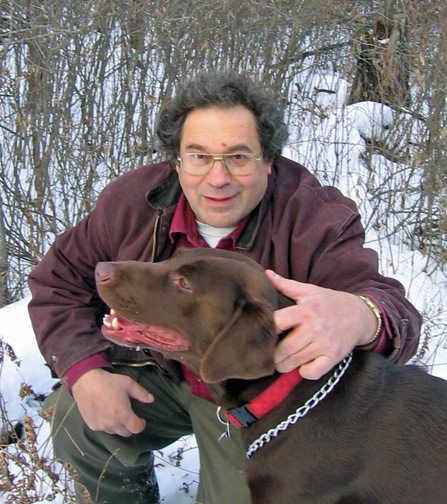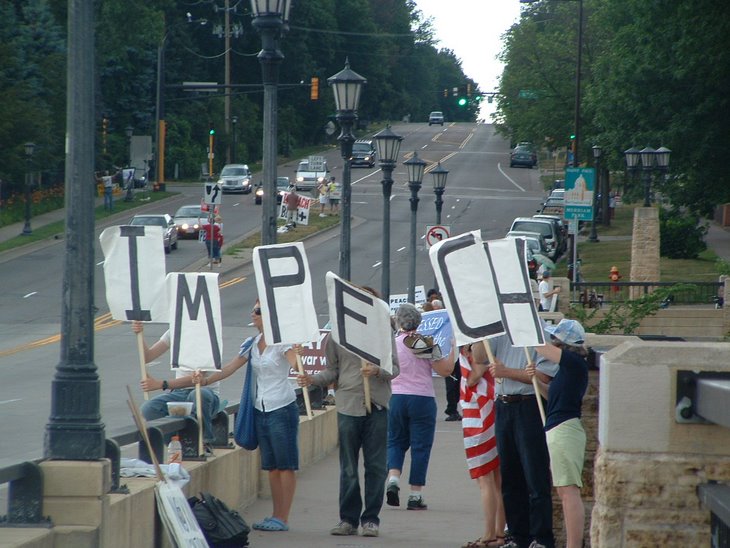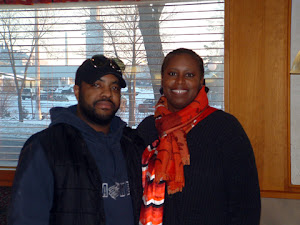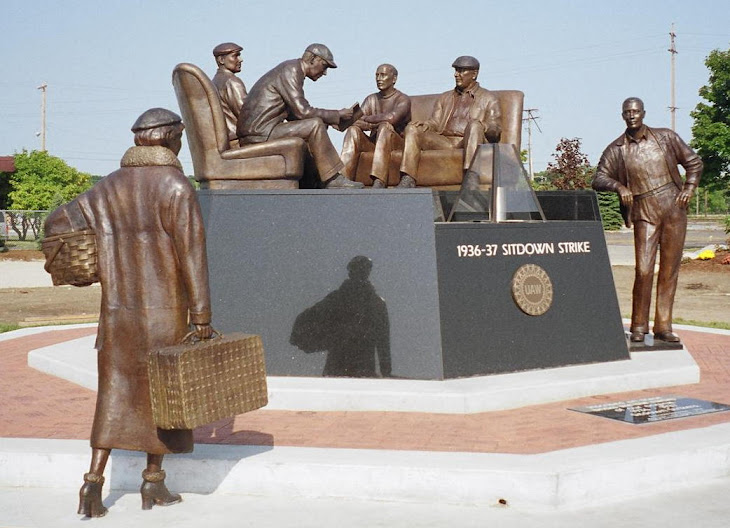Sunday, July 16, 2017
Book Review: Hardboiled Activist: the Work and Politics of Dashiell Hammett
Hardboiled Activist: the Work and Politics of Dashiell Hammett
by Ken Fuller
Praxis Press: Glasgow, Scotland, Great Britain, 2017. $25. 334 Pp.
Revewed by Roger Keeran
July 11, 2017
Ever since Roland Barthe’s essay, “La Mort d’auteur” (“The Death of the Author) in 1967, academic critics have come to regard an author’s political views and biography as meaningless tools for understanding a novel that willy nilly has a life of its own. Though this idea has some merit, it has deprived literary criticism of a lot of pleasure. Fortunately, for readers interested in the life and work of Dashiell Hammett, Ken Fuller does not share Barthe’s approach, and consequently his study of Hammett’s “work and politics” is not only serious but a lot of fun.
This book is particularly fascinating for any leftist who has ever read The Red Harvest or seen “The Maltese Falcon” or “The Thin Man” and wondered what these works had to do with the life of their author, a presumed Communist, whose longtime companion was the Communist playwright Lillian Hellman and who went to prison rather than name names.
Fuller explores the anomaly of a writer whose works unlike his life lacked obvious progressive meaning.
Plenty of material has appeared on Dashiell Hammett’s life and work. At least thirteen studies or biographies of Hammett exist (actually sixteen, if you count multiple studies by the same author). The merit of Fuller’s book resides not in new facts (though he does provide new confirmation of Hammett’s membership in the Communist Party), but in its analysis and understanding of his life and work.
Fuller makes a two-fold argument that departs from earlier treatments of Hammett. Unlike biographers and critics who have seen Marxist or socialist ideas in Hammett’s work, Fuller argues that at the time he was writing, Hammett was not a Marxist, and that at most he was a nihilist, and that the only thing political about his work was a vague anti-capitalism. During the Popular Front, Hammett joined the Communist Party, and while a Communist, he no longer wrote fiction. Fuller also argues that most treatments of Hammett’s politics are terribly misleading. Presenting Hammett as a dupe, naïve, or intellectually lazy, most treatments disfigure the man and misconstrue the history. During the last twenty-five years of his life, Hammett was a committed and knowledgeable Communist activist, and he did not travel this path alone.
Fuller is a man of the left. He was a trade union official in London and a historian who has written a history of London bus workers and a three volume history of the left in the Philippines. Fuller shows more empathy to Hammett’s views than anyone else who has written about him, including Lillian Hellman. Fuller observes that most writers have more interest in showing their own anti-Communist credentials than understanding Hammett. Indeed, Fuller’s refutation of some of Hellman’s memories, recalls Mary McCarthy’s jibe that “every word she [Hellman] writes is false, including ‘and’ and ‘but.’” In any case, having a biographer who understands a subject’s politics counts a lot when politics occupy as central a place in a subject’s life as they did in Hammett’s. Not only did Hammett most likely belong to the Party from 1936 or 37 until his death in 1961, but also he was involved with twenty-two publications or organizations associated with the Communist Party, including a long stint as a teacher at the Party’s Jefferson School in New York City.
Fuller’s perspective leads to some penetrating insights into Hammett’s writing and such puzzles of his life as why and when he became a Communist and why he never produced another book or short story after 1936. Though not all of Fuller’s answers break new ground or dispel all doubt, he argues well and provokes thought.
The most outstanding contribution of the book is Fuller’s discussion of Hammett’s politics in Chapter 7, “Hardboiled activist.” Many of those who have written about Hammett hold him in contempt for accepting the “Soviet line” and rejecting anti-Stalinism. As Fuller says, “None of these writers even attempt to explain why Hammett (or Hellman) would have adopted these positions.” Fuller does just that. He imagines why Hammett was attracted to the Popular Front positions, why he supported the verdicts of the Moscow Trials, why he rejected George Orwell’s position on the Spanish Civil War, and why he supported the Soviet-German Non-Aggression Pact of 1939 and the change in the Communist Party’s position that came with it. Fuller’s summary and analysis of the plots of every book and short story can try one’s patience, but with this chapter his account comes alive. The whole book is worth Fuller’s exercise in historical re-imagining.
For someone who has devoted so much time and attention to him, Fuller does not display much liking for Hammett. Fuller’s judgments about the man and his inferences drawn from Hammett’s writings constitute the most problematic aspects of the book. Undoubtedly, there was much about Hammett to dislike. He made a lot of money from his books and screenplays and spent it wantonly on wine, women, and for a time, a lavish, Hollywood lifestyle. He evaded his duties as a provider for his former wife and two daughters. He had affairs, saw prostitutes, and on more than once occasion, hit a woman. In his stories and books particularly in the 1920s, he occasionally used racist language and stereotypes. For much of his life, he had a severe drinking problem, and for the last twenty-five years, he produced no books or stories.
Still, some of Fuller judgments though never rash are sometimes harsh. Fuller says, for example, “It must surely be the case that few communist parties in the world would have welcomed someone with a lifestyle like Hammett’s.” This is dubious. Infidelity and alcoholism certainly existed in Communist ranks. Hammett’s drinking and luxury differed not a whit from that of Hollywood Communists, like Dalton Trumbo. Similarly, to say that “a Marxist would never have penned” the “blatant escapism” of some of Hammett’s screenplays, ignores the constraints that Hollywood writers labored under as well as some of the screenplays produced by other Communist screenwriters. Trumbo, for example, no stranger to escapism, penned or helped pen such films as “Carnival Story,” “Curtain Call,” and “Sorority House.”
Moreover, Fuller claims that because of “his ability to give up drink for extended periods,” Hammett was a drunk but not an “alcoholic.” This is a rather quaint opinion. Most medical professionals regard alcoholism as any drinking that leads to mental or physical problems. Hammett’s drinking fit that. It was linked to suicidal depression and a nervous breakdown, as well as deteriorating physical health. Fuller credits Hammett for giving up alcohol for good in 1949 but more scorns his alcoholism than pitying it or even recognizing it as such.
Fuller also scores Hammett’s use of racist language and stereotypes in his stories. Such usage certainly strikes contemporary ears as offensive. Yet, is Fuller correct to say that “a socialist, let alone a Marxist would not have employed them?” Unfortunately, such American Socialist notables as Victor Berger and Jack London used racist language, and some racially exclusionary practices even existed in fraternal groups connected with the Communist Party until 1930, when the Party campaigned to educate its members and eradicate such behavior. Roland Barthe’s caution about not confusing an author with his/her works might have application here. That is to say, the racial words of characters or even of a narrator are not necessarily reflective of an author’s values. As Fuller shows, Hammett’s writing often portrayed the corruption, venality and criminality of a capitalist society in which a progressive thought or character rarely appeared. Racism was certainly part of the world Hammett described and hence his description may not be the best guide to his personal views. More telling is the testimony of his daughter Jo Hammett (quoted by Fuller) who said that he had begun life with “the usual racial biases.”
If Fuller and Hammett’s daughter are right, then the most striking thing about Hammett’s “racial biases,” is not that he once had them but how thoroughly he shed them. As a Communist Hammett’s devoted most of his time to the Civil Rights Congress (a Communist-led organization formed in 1946 by the amalgamation of the National Negro Congress, the International Labor Defense and the National Federation for Constitutional Liberties) for which he was the New York president. Fuller says that this organization “would have the biggest impact on his life.” Fuller, however, only discusses one aspect of the Congress’ work, namely, raising bail for Communists indicted under the Smith Act. Hammett’s refusal to turn over names of bail fund donors resulted in him going to prison for contempt of court. The Civil Rights Congress, however, mainly concerned itself with defending the civil rights of African-Americans. Indeed, the Congress spearheaded the most noteworthy civil rights cases of its time, including the campaigns to free Willie McGee, the Martinsville Seven, and the Trenton Six. (See Gerald Horne, Communist Front? The Civil Rights Congress, 1946-1956.) Thus, Fuller, who scores the lack of dialectics in Hammett’s writing, does not give quite enough credit to Hammett’s own dialectical change. Hammett not only changed from an agent for the strikebreaking Pinkerton Agency to a Communist, but from a casual racist to a civil rights activist. If there was much to dislike about Hammett, there was also much to admire.
Such reservations are small potatoes, while Fuller’s book provides both meat and potatoes. He treats his subject with seriousness and his readers with intelligence. I cannot imagine a more politically empathetic and engaging treatment of Hammett’s life and work.
by Ken Fuller
Praxis Press: Glasgow, Scotland, Great Britain, 2017. $25. 334 Pp.
Revewed by Roger Keeran
July 11, 2017
Ever since Roland Barthe’s essay, “La Mort d’auteur” (“The Death of the Author) in 1967, academic critics have come to regard an author’s political views and biography as meaningless tools for understanding a novel that willy nilly has a life of its own. Though this idea has some merit, it has deprived literary criticism of a lot of pleasure. Fortunately, for readers interested in the life and work of Dashiell Hammett, Ken Fuller does not share Barthe’s approach, and consequently his study of Hammett’s “work and politics” is not only serious but a lot of fun.
This book is particularly fascinating for any leftist who has ever read The Red Harvest or seen “The Maltese Falcon” or “The Thin Man” and wondered what these works had to do with the life of their author, a presumed Communist, whose longtime companion was the Communist playwright Lillian Hellman and who went to prison rather than name names.
Fuller explores the anomaly of a writer whose works unlike his life lacked obvious progressive meaning.
Plenty of material has appeared on Dashiell Hammett’s life and work. At least thirteen studies or biographies of Hammett exist (actually sixteen, if you count multiple studies by the same author). The merit of Fuller’s book resides not in new facts (though he does provide new confirmation of Hammett’s membership in the Communist Party), but in its analysis and understanding of his life and work.
Fuller makes a two-fold argument that departs from earlier treatments of Hammett. Unlike biographers and critics who have seen Marxist or socialist ideas in Hammett’s work, Fuller argues that at the time he was writing, Hammett was not a Marxist, and that at most he was a nihilist, and that the only thing political about his work was a vague anti-capitalism. During the Popular Front, Hammett joined the Communist Party, and while a Communist, he no longer wrote fiction. Fuller also argues that most treatments of Hammett’s politics are terribly misleading. Presenting Hammett as a dupe, naïve, or intellectually lazy, most treatments disfigure the man and misconstrue the history. During the last twenty-five years of his life, Hammett was a committed and knowledgeable Communist activist, and he did not travel this path alone.
Fuller is a man of the left. He was a trade union official in London and a historian who has written a history of London bus workers and a three volume history of the left in the Philippines. Fuller shows more empathy to Hammett’s views than anyone else who has written about him, including Lillian Hellman. Fuller observes that most writers have more interest in showing their own anti-Communist credentials than understanding Hammett. Indeed, Fuller’s refutation of some of Hellman’s memories, recalls Mary McCarthy’s jibe that “every word she [Hellman] writes is false, including ‘and’ and ‘but.’” In any case, having a biographer who understands a subject’s politics counts a lot when politics occupy as central a place in a subject’s life as they did in Hammett’s. Not only did Hammett most likely belong to the Party from 1936 or 37 until his death in 1961, but also he was involved with twenty-two publications or organizations associated with the Communist Party, including a long stint as a teacher at the Party’s Jefferson School in New York City.
Fuller’s perspective leads to some penetrating insights into Hammett’s writing and such puzzles of his life as why and when he became a Communist and why he never produced another book or short story after 1936. Though not all of Fuller’s answers break new ground or dispel all doubt, he argues well and provokes thought.
The most outstanding contribution of the book is Fuller’s discussion of Hammett’s politics in Chapter 7, “Hardboiled activist.” Many of those who have written about Hammett hold him in contempt for accepting the “Soviet line” and rejecting anti-Stalinism. As Fuller says, “None of these writers even attempt to explain why Hammett (or Hellman) would have adopted these positions.” Fuller does just that. He imagines why Hammett was attracted to the Popular Front positions, why he supported the verdicts of the Moscow Trials, why he rejected George Orwell’s position on the Spanish Civil War, and why he supported the Soviet-German Non-Aggression Pact of 1939 and the change in the Communist Party’s position that came with it. Fuller’s summary and analysis of the plots of every book and short story can try one’s patience, but with this chapter his account comes alive. The whole book is worth Fuller’s exercise in historical re-imagining.
For someone who has devoted so much time and attention to him, Fuller does not display much liking for Hammett. Fuller’s judgments about the man and his inferences drawn from Hammett’s writings constitute the most problematic aspects of the book. Undoubtedly, there was much about Hammett to dislike. He made a lot of money from his books and screenplays and spent it wantonly on wine, women, and for a time, a lavish, Hollywood lifestyle. He evaded his duties as a provider for his former wife and two daughters. He had affairs, saw prostitutes, and on more than once occasion, hit a woman. In his stories and books particularly in the 1920s, he occasionally used racist language and stereotypes. For much of his life, he had a severe drinking problem, and for the last twenty-five years, he produced no books or stories.
Still, some of Fuller judgments though never rash are sometimes harsh. Fuller says, for example, “It must surely be the case that few communist parties in the world would have welcomed someone with a lifestyle like Hammett’s.” This is dubious. Infidelity and alcoholism certainly existed in Communist ranks. Hammett’s drinking and luxury differed not a whit from that of Hollywood Communists, like Dalton Trumbo. Similarly, to say that “a Marxist would never have penned” the “blatant escapism” of some of Hammett’s screenplays, ignores the constraints that Hollywood writers labored under as well as some of the screenplays produced by other Communist screenwriters. Trumbo, for example, no stranger to escapism, penned or helped pen such films as “Carnival Story,” “Curtain Call,” and “Sorority House.”
Moreover, Fuller claims that because of “his ability to give up drink for extended periods,” Hammett was a drunk but not an “alcoholic.” This is a rather quaint opinion. Most medical professionals regard alcoholism as any drinking that leads to mental or physical problems. Hammett’s drinking fit that. It was linked to suicidal depression and a nervous breakdown, as well as deteriorating physical health. Fuller credits Hammett for giving up alcohol for good in 1949 but more scorns his alcoholism than pitying it or even recognizing it as such.
Fuller also scores Hammett’s use of racist language and stereotypes in his stories. Such usage certainly strikes contemporary ears as offensive. Yet, is Fuller correct to say that “a socialist, let alone a Marxist would not have employed them?” Unfortunately, such American Socialist notables as Victor Berger and Jack London used racist language, and some racially exclusionary practices even existed in fraternal groups connected with the Communist Party until 1930, when the Party campaigned to educate its members and eradicate such behavior. Roland Barthe’s caution about not confusing an author with his/her works might have application here. That is to say, the racial words of characters or even of a narrator are not necessarily reflective of an author’s values. As Fuller shows, Hammett’s writing often portrayed the corruption, venality and criminality of a capitalist society in which a progressive thought or character rarely appeared. Racism was certainly part of the world Hammett described and hence his description may not be the best guide to his personal views. More telling is the testimony of his daughter Jo Hammett (quoted by Fuller) who said that he had begun life with “the usual racial biases.”
If Fuller and Hammett’s daughter are right, then the most striking thing about Hammett’s “racial biases,” is not that he once had them but how thoroughly he shed them. As a Communist Hammett’s devoted most of his time to the Civil Rights Congress (a Communist-led organization formed in 1946 by the amalgamation of the National Negro Congress, the International Labor Defense and the National Federation for Constitutional Liberties) for which he was the New York president. Fuller says that this organization “would have the biggest impact on his life.” Fuller, however, only discusses one aspect of the Congress’ work, namely, raising bail for Communists indicted under the Smith Act. Hammett’s refusal to turn over names of bail fund donors resulted in him going to prison for contempt of court. The Civil Rights Congress, however, mainly concerned itself with defending the civil rights of African-Americans. Indeed, the Congress spearheaded the most noteworthy civil rights cases of its time, including the campaigns to free Willie McGee, the Martinsville Seven, and the Trenton Six. (See Gerald Horne, Communist Front? The Civil Rights Congress, 1946-1956.) Thus, Fuller, who scores the lack of dialectics in Hammett’s writing, does not give quite enough credit to Hammett’s own dialectical change. Hammett not only changed from an agent for the strikebreaking Pinkerton Agency to a Communist, but from a casual racist to a civil rights activist. If there was much to dislike about Hammett, there was also much to admire.
Such reservations are small potatoes, while Fuller’s book provides both meat and potatoes. He treats his subject with seriousness and his readers with intelligence. I cannot imagine a more politically empathetic and engaging treatment of Hammett’s life and work.































